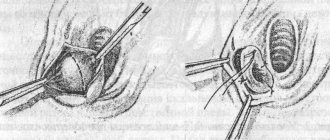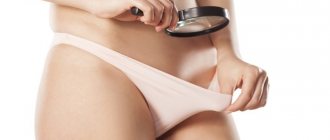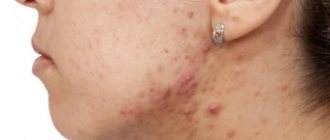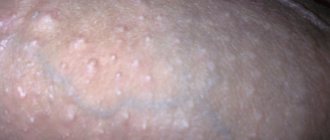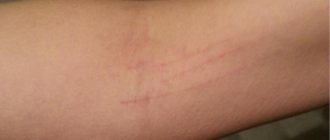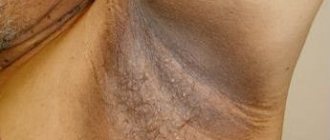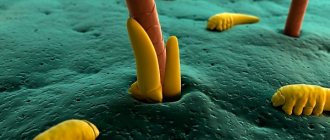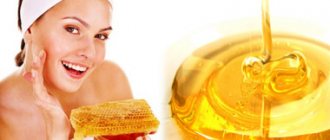- What are Montgomery tubercles?
- Montgomery tubercles during menstruation
- Montgomery tubercles during pregnancy
- Inflammation of the Montgomery tubercles
- How to get rid of Montgomery tubercles?
A woman’s attention to the structure of her breasts can often cause surprise and even anxiety. Small pimples on the nipple halos are Montgomery tubercles , rudimentary glands, the function of which is leveled today. However, these formations can significantly affect the appearance of the breasts, and sometimes even cause concern. What are Montgomery tubercles and what condition should be a reason to contact a specialist?
What are Montgomery tubercles?
, the Montgomery tubercles are called the Montgomery glands or the areola. These are small anatomical formations localized along the periphery of the nipple. Their average number is 10-12, but it can be either 4 or up to 28 pieces. These formations were first described by the Irish obstetrician William Montgomery; today they have been studied enough to talk about their maximum development at the time of pregnancy and lactation. In other periods of a woman’s life, they stand out to a lesser extent, although there are exceptions.
Montgomery's tubercles are considered to be vestigial glands, but there are several points of view - either sebaceous or mammary. Proponents of the first point of view (that these are sebaceous) argue that these glands are capable of secreting a lipoid factor, which slightly protects the areola from drying out and has weak bactericidal properties. Their opponents are based on the fact that the Montgomery tubercles reach their greatest development with the onset of pregnancy - they can increase both in the first week of pregnancy and even after childbirth - and after some time they return to their previous state. This development is associated with hormonal changes in the body and the transformation of the breast at the time of childbirth.
All scientists agree on one thing - the Montgomery glands are today a vestigial element. At the same time, some researchers find the meaning of these formations for modern man. A study was conducted at the National Research Center of Dijon (France) that proved that a larger number of Montgomery tubercles in a nursing woman provides active nutrition, and therefore an accelerated rate of development for children.
In addition, there is a point of view that these rudimentary glands still contain some substance that is captured by the child’s receptors, encouraging him to suck mother’s milk. The researchers' goal is to identify this secret and use it in the future to accustom premature babies to their mother's breast.
Treatment of white spots
Treatment for white spots and rashes depends on the cause of the pathology and symptoms. Patients with strange formations should first consult with a gynecologist, and then select remedies and medications to eliminate the problem.
Depigmentation
Acrofacial vitiligo is a chronic disease that cannot be cured, but the symptoms can be eliminated. The condition of the skin will be improved by comprehensive treatment, which includes:
- drugs that normalize the functioning of the liver and gastrointestinal tract;
- vitamin complexes with zinc, ascorbic acid, copper and vitamin PP;
- immunomodulatory agents;
- massage;
- moderate sunbathing.
If you have vitiligo, you should not sunbathe topless or stay in the sun for a long time without a high SPF cream. It is also worth monitoring your diet, avoiding stressful situations and monitoring the levels of male and female hormones.
Fordyce granules
Seborrheic cysts are usually not treated. Patients are advised not to squeeze or injure the formations, so as not to cause infection, and to monitor hygiene.
Fox-Fordyce disease is treated surgically. Granules on the nipples are removed with a laser. The hardware method is the most gentle and effective. Before surgery, the nipples are treated with an anesthetic, so the procedure is quick and without discomfort. After laser removal of papules, no scars remain on the skin, and the areolas acquire a normal color.
Fordyce granules are also treated with cryotherapy and electrocoagulation. Cryotherapy is the effect of liquid nitrogen on formations. Cysts are cauterized with a drug that stimulates renewal of the epidermis and improves the functioning of the sebaceous glands.
Electrocoagulation is the effect of electric current on Fordyce granules. The cysts are destroyed with an electric discharge, and then the contents of the formations are scraped out with special instruments.
Blockage of the sebaceous glands
Frequent rashes on the nipples and chest can be the result of poor diet. Too fatty foods disrupt intestinal function and slow down metabolic processes, which impairs the functioning of the sebaceous glands. And allergenic products cause intoxication of the body and a rash on the skin, including on the nipples.
Proper nutrition can correct the situation and reduce the number of rashes. For regular blockage of the sebaceous glands on the nipples, you need to:
- Remove sweets, sausages, animal fats and preserves from your diet. Do not use soda, too hot spices and herbs.
- Avoid citrus fruits, honey, nuts and other allergenic foods. You can experimentally find out what exactly the body does not like, and remove from the menu only dishes that provoke allergy attacks.
- Eat plenty of fruits, vegetables and cereals. These products are sources of vitamins and fiber necessary for rapid metabolism and normal intestinal function.
Women with sensitive skin prone to allergies should also avoid aggressive shower gels and hard washcloths. It is better to replace regular perfumes with hypoallergenic ones.
Blocked milk ducts
Blocked milk ducts can be cleared in two ways. The first option is to place the baby on the problem breast so that his chin rests on the inflamed area. Press the baby's lower jaw onto the duct, and the plug will come out along with the stagnant colostrum.
If the first method does not help, you need to apply a towel soaked in warm water to the nipple. Leave the compress for 2-3 minutes to soften the plug. Then the nipple should be lubricated with sterilized or heated butter using sterile cotton wool or a swab.
The last step is squeezing out the cork. The woman should cup her breast 2–3 cm above the blockage and apply gentle pressure. The plug will pop out and milk will flow out of the duct. If the method does not work, you can pierce the milk bubble with a needle. The instrument must be calcined over fire and wiped with alcohol.
For frequent blockages, taking Lecithin and a course of ultrasound therapy helps, but these methods can only be used after the approval of a gynecologist. And if none of the popular methods gives results, it is worth undergoing a comprehensive examination and finding out the cause of the pathology.
Montgomery tubercles during menstruation
Medical practice knows of cases where Montgomery tubercles begin to clearly appear during puberty in teenage girls. From 4 to 28 tubercles are formed on the nipple halo, usually their number reaches 10-12. This indicates that a period of active puberty has begun and the female monthly cycle is forming.
With the onset and course of the next menstruation, there should not be any changes in the appearance of the nipple halo; this is typical only during pregnancy. Normally, Montgomery tubercles in a mature, non-pregnant woman are barely noticeable or not noticeable at all. If the tubercles stand out or increase with the onset of the next menstruation, this may be a feature of the hormonal development of the body, which is worth discussing with your mammologist or gynecologist-endocrinologist. What is definitely not recommended to do is to take any independent measures to eliminate such conspicuous breast features.
In a sexually mature woman, the Montgomery tubercles perform a number of functions, although they may be noticeable to varying degrees. So, the glands that are barely preserved at this evolutionary level of development are needed by a modern woman for the following:
- secrete a natural lubricant that protects the nipple from drying out;
- secrete a secretion that has a bactericidal effect, which is especially appropriate during breastfeeding;
- emit a special smell that attracts the newborn to the mother’s breast;
- They rarely secrete milk or colostrum, which affects the amount of milk produced during lactation.
Prevention
It is impossible to avoid the manifestation of physiological changes during pregnancy. After lactation ends, Montgomery's tubercles usually shrink and return to their pre-pregnancy state.
Proper breast care during pregnancy helps prevent clogged or infected glands:
- daily washing of the glands with warm water without soap and shower gels;
- using glycerin compounds, baby cream, or a doctor-recommended product to soften the skin of the breasts and nipples;
- contrast shower for the chest to increase blood flow and strengthen delicate skin;
- Regular use of pads in your bra if your milk is leaking or your nipples are sensitive.
Montgomery tubercles during pregnancy
It is with the onset of pregnancy that most women learn about such a feature of the structure of their breasts as Montgomery tubercles . It is believed that these formations are of little importance during pregnancy and lactation. In addition to the fact that the secretion they produce has a weak bactericidal and moisturizing effect on the halo, studies have shown that it helps the baby get used to the breast.
It is interesting that the tubercles in some women begin to swell almost in the first week of pregnancy, which may just inform the expectant mother about her interesting situation. At the same time, an increase in tubercles closer to the end of the period or even during lactation is considered normal. In some women, during pregnancy and breastfeeding, Montgomery's tubercles do not stand out at all.
If an expectant mother notices Montgomery tubercles, this is not a cause for concern; their increase is normal. Inflamed tubercles, accompanied by pain and redness, should be a slight cause for alarm.
Treatment of inflamed, pathologically developing Montgomery tubercles in a pregnant woman should be prescribed exclusively by a doctor, who, of all topical drugs, will give preference to the safest ones, usually homeopathy or herbal remedies. Concern in the nipple area should be an indispensable reason to consult a doctor; postponing the solution to the problem is not recommended.
Pathological conditions
Some pimples around and inside the nipple of the breast are a consequence of the development of pathology.
- Eczema. A complicated form of allergy, the result of excessive friction or hormonal imbalance.
- Neurodermatitis. An allergic reaction develops after nervous stress and mental disorders.
- Atheroma. A subcutaneous clot of adipose tissue forms not only on the dermis, but also on the nipples. Blockage of the duct leads to the accumulation of secretions, which leads to the formation of a wen. The symptom is the presence of a rolling ball inside.
- Telit. Redness of the entire surface of the nipple is called by this medical term.
- Mastitis. The inflammation is located inside the mammary gland and spreads to the nipple and areola (blood is often released from them).
White pimples that appear around the nipples in women are a sign of furunculosis. Entering the epidermis through wounds, pathogenic microflora causes inflammation, often transforming into a purulent process.
If they appear, then urgent treatment is needed: some nodules lead to necrotic processes and abscesses. Doctors recommend opening pustules, but only under the supervision of a specialist.
There are three answers to the question of which doctor you should contact. When there is a suspicion that the activity of the mammary gland is impaired, then go to a mammologist, or a skin specialist - a dermatologist. If you suspect the development of a neoplasm, it is better to visit an oncologist.
Paget's disease is a malignant disease that is accompanied by the appearance of ulcers and pain. In most patients, the pathology is localized on the nipple, less often - near the areola.
Conclusion
Suddenly appearing pimples on the nipples in women are mainly related to anatomical formations, but there are also manifestations that are caused by diseases.
Doctors warn! Shocking statistics - it has been established that more than 74% of skin diseases are a sign of parasite infection (Accarida, Giardia, Toxocara). Worms cause enormous harm to the body, and the first to suffer is our immune system, which should protect the body from various diseases. The head of the Institute of Parasitology shared the secret of how to quickly get rid of them and cleanse your skin, it turns out that’s enough. Read more .
White bumps are the consequences of the effects of herpes on the body, and doctors can only eliminate them with medication. Purulent processes are also dangerous, so they should be neutralized as soon as possible.
source
Inflammation of the Montgomery tubercles
Medicine knows of cases when Montgomery's tubercles become inflamed - soreness, hyperemia (redness) develops, extremely rarely exudate or similar unnatural discharge can be released from them.
Pathologies in the appearance of the nipple halo should be a reason for a woman to consult a doctor - a mammologist or gynecologist. It is strictly forbidden to take independent measures to eliminate inflamed Montgomery tubercles.
Inflammation of the tubercles during pregnancy has a particularly adverse effect on health. It is this period that is usually marked by the development of such a disorder. The body of a pregnant woman is more susceptible to infection, and the immune system weakens. In addition, hormonal changes occur and the woman experiences some transformations in her breasts - sensitivity increases, the nipple halo changes somewhat. Against the background of these sensations, it is extremely important to react in time to unfavorable changes:
- painful sensations when touching the tubercles,
- redness in the area of the mammary glands, on the periphery of the nipples,
- excessive enlargement of the tubercles.
How to distinguish normality from pathology? The answer is simple - if you have any anxiety, consult your doctor.
Neither during pregnancy nor during inflammation of the Montgomery tubercles in a non-pregnant woman should one begin the procedures of warming, squeezing, or cauterizing the tubercles. It is acceptable to treat the inflamed areas with an antiseptic and then seek professional help.
Reasons for appearance
Glands are natural anatomical structures. At the time of birth, the girl already has Montgomery formations. The structures are formed during the intrauterine development of the fetus. Examination of a newborn allows you to see almost invisible formations around the perimeter of the areolas. Simultaneously with the growth of the child's body, Montgomery structures increase. Gradually, the formations acquire the appearance characteristic of the breasts of an adult woman.
Researchers note the following reasons for the appearance of Montgomery tubercles on the mammary gland:
- Puberty. By the age of 12-14, a girl’s body undergoes significant restructuring, provoked by changes in hormonal balance - a period of hormonal explosion. It is characterized by the active development of the genital organs and an increase in the volume of the mammary glands. At the same time, the Montgomery formations increase and begin to rise above the surface of the areola.
- Changes in hormonal levels during the premenstrual period. The condition is associated with the transition of one hormonal phase of the ovulatory cycle to another, which provokes changes in the sexual sphere.
- Pregnancy and breastfeeding. The appearance of the structures is associated with hormonal changes characteristic of both periods.
Attention! The main reason for the appearance of formations is changes in the hormonal balance in a woman’s body at different stages of her life.
How to get rid of Montgomery tubercles?
If Montgomery's tubercles become noticeable as pregnancy progresses, this is considered normal and no special action is required. If in some women they increase in the first weeks of pregnancy, and in others almost with the onset of lactation, then normally in all they return to their normal appearance with the cessation of the lactation period.
When Montgomery's tubercles attract attention not just because of their increased size, but because of inflammation, itching or pain, then getting rid of them should be entrusted to a professional physician.
Local bactericidal and anti-inflammatory drugs are usually prescribed, as well as various methods of herbal medicine and homeopathy. The latter are especially relevant if inflammation develops during pregnancy. Physiotherapeutic procedures may also be prescribed to treat inflamed Montgomery tubercles
Modern medicine also offers women such a service as surgical of Montgomery tubercles An indication for this is aesthetically unsightly bumps left after lactation or formed during puberty. At the woman’s request, the work will be carried out by a plastic surgeon, leaving scars that are almost invisible to the human eye. However, no matter how attractive this prospect may be, it is worth thinking carefully - although the glands are recognized as rudimentary, they still serve some purpose during the period of feeding a child.
Symptoms of nipple damage: pain and discomfort
Nipple blisters can be tiny and difficult to detect. Cracks due to improper attachment of the baby and calluses are more obvious, as they cause pain. It is necessary to check for signs indicating the development of nipple lesions.
- A small bump on and around the tip of the nipple. If you run your finger over the nipple, you may feel pain and discomfort.
- A clear, flesh-colored or white spot on the tip of the nipple. The white spot is basically a milk blister.
- Gently pressing or squeezing the nipple between your thumb and index finger causes a tiny bump to appear right at the tip of the nipple. This is more noticeable in the case of the milk bladder, which is white in color.
- The mother may also experience a dull ache at the tip of the nipple. The pain most often occurs when a woman is breastfeeding or when the breasts rub against clothing.
Although most nipple blisters and cracks are harmless, there are situations when they should be examined by a doctor.


